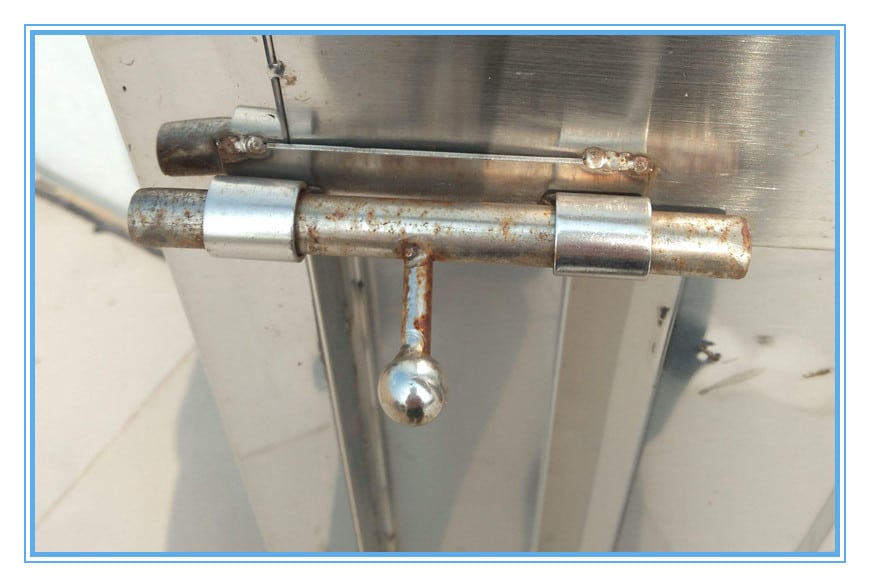Is your stainless steel RUST?
304 stainless steel is a common material in stainless steel. The density is 7.93 g/cm3, also known in the industry as 18/8 stainless steel. With high temperature resistance of 800 ° C, good processing performance and high toughness, it is widely used in industrial and furniture decoration industry and food medical industry.
Common models on the market are 06Cr19Ni10 and SUS304.Among them, 06Cr19Ni10 generally represents the national standard production. 304 generally indicates ASTM standard production. SUS 304 indicates the production of Japanese standard.304 is a versatile stainless steel. It is widely used to make equipment and parts that require good overall performance (corrosion resistance and formability). In order to maintain the corrosion resistance inherent in stainless steel, the steel must contain more than 18% chromium and more than 8% nickel. 304 stainless steel is a grade of stainless steel produced in accordance with American ASTM standards.
In theory, stainless steel does not rust. However, in real life and applications, some stainless steel products will be rusted.Maybe may be due to the following reasons:

Chloride
Chloride ions are widely present, such as salt/sweat/seawater/sea breeze/soil. Stainless steel in the presence of chloride ions, corrosion is very fast, even more than ordinary low carbon steel.Therefore, there is a requirement for the use environment of stainless steel. It needs to be wiped frequently to remove dust and keep it clean and dry.
The United States has an example. A company uses a container of oak to hold a solution containing chloride ions. The container has been in use for nearly a hundred years. Planned replacement in the 1990s. Because the oak material is not modern enough, it is replaced with stainless steel. The container leaked due to corrosion after 16 days.
Solution treatment
The alloying elements are not dissolved in the matrix, resulting in a low content of the matrix microstructure and poor corrosion resistance.
Intergranular corrosion
Materials that do not contain titanium and niobium have a tendency to intergranular corrosion.The addition of titanium and niobium with stable treatment can reduce intergranular corrosion.In air or chemically corrosive media, corrosion resistant is a high alloy steel. Stainless steel has an aesthetically pleasing surface and good corrosion resistance, and does not require surface treatment such as plating.
One of the steels used in many aspects, which is inherent in the surface properties of stainless steel, is often called stainless steel. Representative properties include high-alloy steels such as 13 chrome steel and 18-8 chrome nickel steel. From the perspective of metallography, because stainless steel contains chromium and the surface forms a very thin chromium film, this film is isolated from the intrusion of oxygen in the steel to resist corrosion. In order to maintain the corrosion resistance inherent in stainless steel, the steel must contain more than 12% chromium. Used in applications where soldering is required. The lower carbon content minimizes the precipitation of carbides in the heat affected zone near the weld. The precipitation of carbides may cause the intergranular corrosion (welding erosion) of stainless steel in certain environments.
Surface mark phenomenon
Surface mark phenomenon refers to the occurrence of wire-filled or dot-like pit mark defects on the surface of the product after deep processing of 304 stainless steel or processed products.
Cause: There are foreign objects on the surface and the surface of the mold, and there are scars on the surface of the pressure pad.
Countermeasure: remove foreign matter, scars before processing, and remove orange peel by sufficient grinding.
The orange peel phenomenon refers to the phenomenon that the surface of the 304 stainless steel molded article has a shape like orange peel in the case of grinding or other conditions.
Reason: The grinding is not sufficient. The larger the processing, the more serious the orange peel, the coarser the raw material grains, and the heat treatment softens.
Countermeasure: The deep-processed product is fully ground, and the suitable heat treatment conditions are selected to control the grain size of the raw material.
